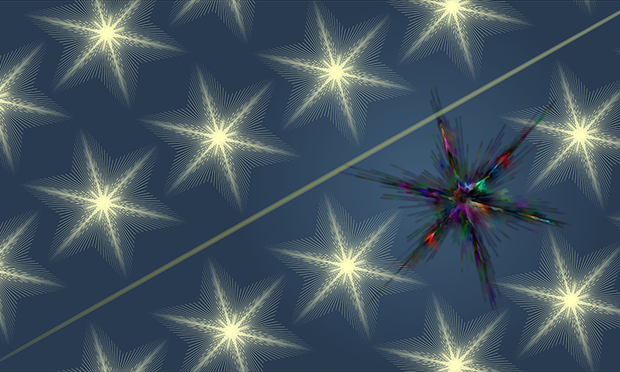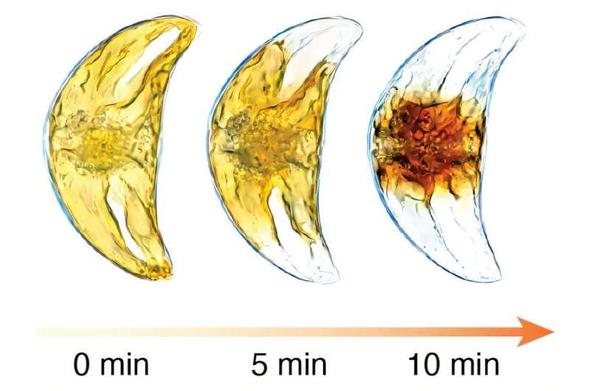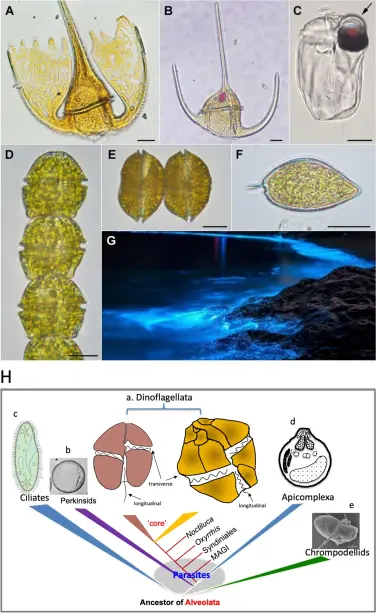https://journals.plos.org/plosone/article?id=10.1371/journal.pone.0323675 #oceanlife #marinebiology #naturediscovery #sciencealert #HackerNews #ngated
Large, regionally variable shifts in diatom and dinoflagellate biomass in the North Atlantic over six decades
The North Atlantic Ocean has large seasonal blooms rich in diatoms and dinoflagellates which can contribute disproportionately relative to other primary producers to export production and transfer of resources up the food web. Here we analyze data from the Continuous Plankton Recorder to reconstruct variation in the surface ocean diatom and dinoflagellate community biomass over 6 decades across the North Atlantic. We find: 1) diatom and dinoflagellate biomass has decreased up to 2% per year throughout the North Atlantic except in the eastern and western shelf regions, and 2) there has been a 1–2% per year increase in diatom biomass relative to total diatom and dinoflagellate biomass throughout the North Atlantic, except the Arctic province, from 1960–2017. Our results confirm the widely reported relationship where diatoms are displaced by dinoflagellates as waters warm on monthly to annual time scales. The common assumption that gradual ocean warming will result in a decadal-scale shift from diatoms to dinoflagellates was not supported by our analysis. Predicting the effects of climate change likely requires consideration of the consequences for the whole community, the simultaneous change of multiple environmental variables, and the evolutionary potential of plankton populations.
Shifts in diatom and dinoflagellate biomass in the North Atlantic over 6 decades
https://journals.plos.org/plosone/article?id=10.1371/journal.pone.0323675
#HackerNews #Diatoms #Dinoflagellates #NorthAtlantic #MarineBiology #ClimateChange
Large, regionally variable shifts in diatom and dinoflagellate biomass in the North Atlantic over six decades
The North Atlantic Ocean has large seasonal blooms rich in diatoms and dinoflagellates which can contribute disproportionately relative to other primary producers to export production and transfer of resources up the food web. Here we analyze data from the Continuous Plankton Recorder to reconstruct variation in the surface ocean diatom and dinoflagellate community biomass over 6 decades across the North Atlantic. We find: 1) diatom and dinoflagellate biomass has decreased up to 2% per year throughout the North Atlantic except in the eastern and western shelf regions, and 2) there has been a 1–2% per year increase in diatom biomass relative to total diatom and dinoflagellate biomass throughout the North Atlantic, except the Arctic province, from 1960–2017. Our results confirm the widely reported relationship where diatoms are displaced by dinoflagellates as waters warm on monthly to annual time scales. The common assumption that gradual ocean warming will result in a decadal-scale shift from diatoms to dinoflagellates was not supported by our analysis. Predicting the effects of climate change likely requires consideration of the consequences for the whole community, the simultaneous change of multiple environmental variables, and the evolutionary potential of plankton populations.
https://journals.plos.org/plosone/article?id=10.1371/journal.pone.0323675
#ycombinator #Diatoms #Dinoflagellates #Biomass #Latitude #Phytoplankton #Biogeography #Ocean_temperature #Plankton
Large, regionally variable shifts in diatom and dinoflagellate biomass in the North Atlantic over six decades
The North Atlantic Ocean has large seasonal blooms rich in diatoms and dinoflagellates which can contribute disproportionately relative to other primary producers to export production and transfer of resources up the food web. Here we analyze data from the Continuous Plankton Recorder to reconstruct variation in the surface ocean diatom and dinoflagellate community biomass over 6 decades across the North Atlantic. We find: 1) diatom and dinoflagellate biomass has decreased up to 2% per year throughout the North Atlantic except in the eastern and western shelf regions, and 2) there has been a 1–2% per year increase in diatom biomass relative to total diatom and dinoflagellate biomass throughout the North Atlantic, except the Arctic province, from 1960–2017. Our results confirm the widely reported relationship where diatoms are displaced by dinoflagellates as waters warm on monthly to annual time scales. The common assumption that gradual ocean warming will result in a decadal-scale shift from diatoms to dinoflagellates was not supported by our analysis. Predicting the effects of climate change likely requires consideration of the consequences for the whole community, the simultaneous change of multiple environmental variables, and the evolutionary potential of plankton populations.
#Transposons #Introners #Introns #dsDNAviruses #HorizontalGeneTransfer #Dinoflagellates #Preprint
https://www.biorxiv.org/content/10.1101/2025.03.18.643946v1
Double-stranded DNA viruses may serve as vectors for horizontal transfer of intron-generating transposons
Specialized transposable elements capable of generating introns, termed introners, are one of the major drivers of intron gain in eukaryotes. Horizontal gene transfer (HGT) is thought to play an important role in shaping introner distributions. Viruses could function as vehicles of introner HGT since they often integrate into host genomes and have been implicated in widespread HGT in eukaryotes. We annotated integrated viral elements in diverse dinoflagellate genomes with active introners and queried viral elements for introner sequences. We find that 25% of viral elements contain introners. The vast majority of viral elements represent maverick-polinton-like double-stranded DNA (dsDNA) viruses as well as giant dsDNA viruses. By querying a previously annotated set of maverick-polinton-like proviruses, we show that introners populate full-length elements with machinery required for transposition as well as viral infection. Introners in the vast majority of viral elements are younger than or similar in age to others in their host genome, suggesting that most viral elements acquired introners after integration. However, a subset of viral elements show the opposite pattern wherein viral introners are significantly older than other introners, possibly consistent with virus-to-host horizontal transfer. Together, our results suggest that dsDNA viruses may serve as vectors for HGT of introners between individuals and species, resulting in the introduction of intron-generating transposons to new lineages. ### Competing Interest Statement R.C.-D. was supported by R35GM128932.
A single cell's siesta: How non-moving #microbes manage to avoid bright light https://phys.org/news/2024-11-cell-siesta-celled-bright.html
Light-regulated #chloroplast morphodynamics in a single-celled dinoflagellate https://www.pnas.org/doi/10.1073/pnas.2411725121
"The structure that allows the chloroplast to make necessary changes was found to be a network of thin filaments. Together, these filaments form a material that can easily contract and expand in all directions."
#Protists #Algae #Organelles #Plastids #Dinoflagellates #Biology #CellBiology
A single cell's siesta: How non-moving single-celled organisms manage to avoid bright light
Too much of a good thing is no good at all. Living organisms enjoy sunlight—in fact, they need it to stay alive—but they tend to avoid light that is too bright. Animals go to their shelter, humans have a siesta, even plants have mechanisms to avoid an overdose of light. But how do non-moving single-celled organisms deal with light that is too intense? Researchers at the University of Amsterdam have discovered the surprising answer.
A decade of dinoflagellate #genomics illuminating an enigmatic eukaryote cell https://bmcgenomics.biomedcentral.com/articles/10.1186/s12864-024-10847-5
"#Dinoflagellates are a remarkable group of #protists, not only for their association with harmful #AlgalBlooms and #CoralReefs but also for their numerous characteristics deviating from the rules of eukaryotic biology. #Genome research on dinoflagellates has lagged due to their immense genome sizes in most species (~ 1-250 Gbp)."
A decade of dinoflagellate genomics illuminating an enigmatic eukaryote cell - BMC Genomics
Dinoflagellates are a remarkable group of protists, not only for their association with harmful algal blooms and coral reefs but also for their numerous characteristics deviating from the rules of eukaryotic biology. Genome research on dinoflagellates has lagged due to their immense genome sizes in most species (~ 1-250 Gbp). Nevertheless, the last decade marked a fruitful era of dinoflagellate genomics, with 27 genomes sequenced and many insights attained. This review aims to synthesize information from these genomes, along with other omic data, to reflect on where we are now in understanding dinoflagellates and where we are heading in the future. The most notable insights from the decade-long genomics work include: (1) dinoflagellate genomes have been expanded in multiple times independently, probably by a combination of rampant retroposition, accumulation of repetitive DNA, and genome duplication; (2) Symbiodiniacean genomes are highly divergent, but share about 3,445 core unigenes concentrated in 219 KEGG pathways; (3) Most dinoflagellate genes are encoded unidirectionally and are not intron-poor; (4) The dinoflagellate nucleus has undergone extreme evolutionary changes, including complete or nearly complete loss of nucleosome and histone H1, and acquisition of dinoflagellate viral nuclear protein (DVNP); (5) Major basic nuclear protein (MBNP), histone-like protein (HLP), and bacterial HU-like protein (HCc) belong to the same protein family, and MBNP can be the unifying name; (6) Dinoflagellate gene expression is regulated by poorly understood mechanisms, but microRNA and other epigenetic mechanisms are likely important; (7) Over 50% of dinoflagellate genes are “dark” and their functions remain to be deciphered using functional genetics; (8) Initial insights into the genomic basis of parasitism and mutualism have emerged. The review then highlights functionally unique and interesting genes. Future research needs to obtain a finished genome, tackle large genomes, characterize the unknown genes, and develop a quantitative molecular ecological model for addressing ecological questions.
The source of #paleozoic (hemi-) #pelagic calcareous #mud (before the rise modern pelagic calcifiers) has been bugging me, again, recently.
I have seen arguments for calcification of #cyanobacterial filaments, calcareous #dinoflagellates, breakdown of thin-walled fossils, and I'm not negating #abiotic sources.
Does anyone have any thoughts on the topic?
Coral-infecting #parasites in cold marine ecosystems https://www.cell.com/current-biology/abstract/S0960-9822(24)00323-3 #protists #microbes by Morelia Trznadel et al.
"#CoralReefs are a #biodiversity hotspot, and the association between coral and intracellular #dinoflagellates is a model for #endosymbiosis. Recently, #corals and related #anthozoans have also been found to harbor another kind of endosymbiont, #apicomplexans called #corallicolids."
#Microbes hitchhiking on #plastics in our oceans
https://fems-microbiology.org/femsmicroblog-microbes-hitchhiking-on-plastics-in-our-oceans/
"As a densely populated micro-ecosystem, the #plastisphere is made up of primary producers, predators, symbionts, and decomposers. #Diatoms are considered to be one of the earliest colonizers of plastic surfaces. Over time, as the community matures, they are replaced by other eukaryotes, such as heterotrophic #dinoflagellates."

 Hacker News
Hacker News
